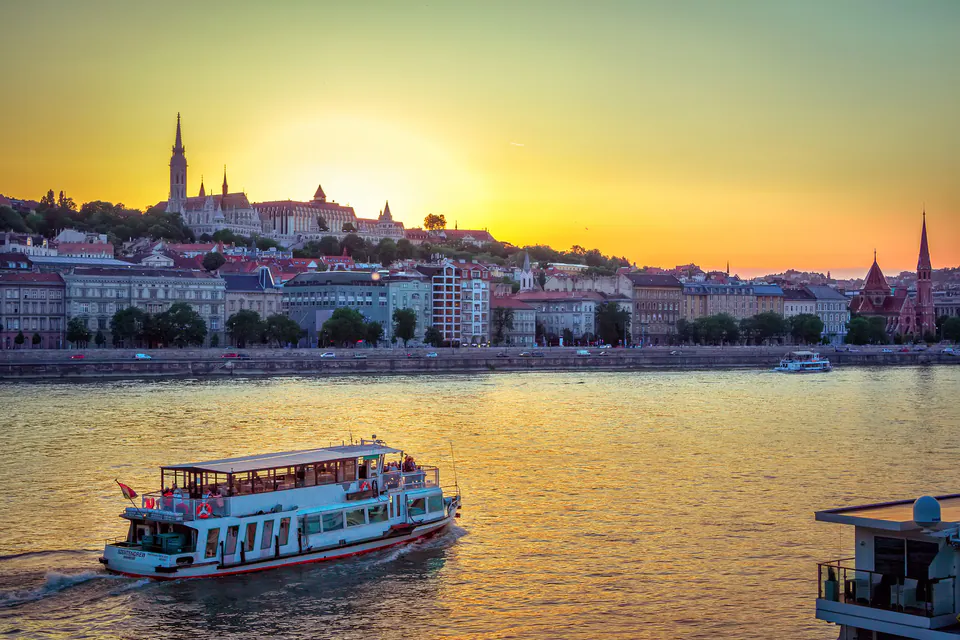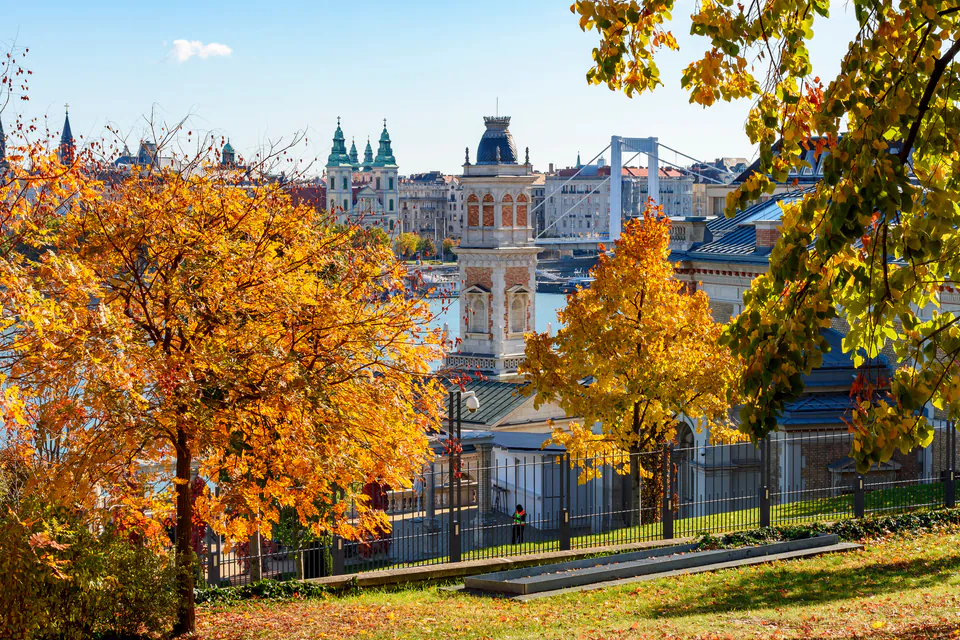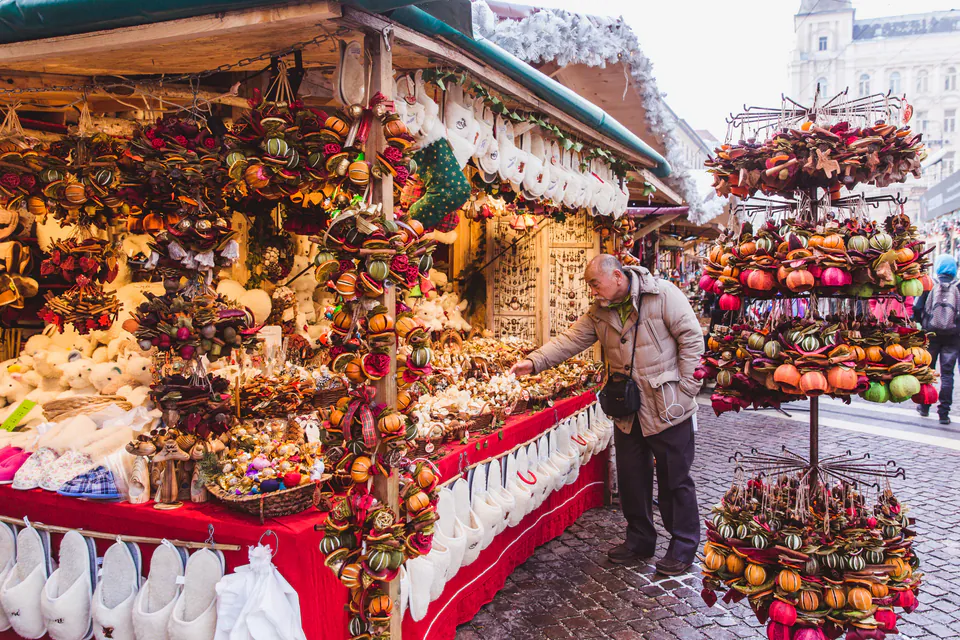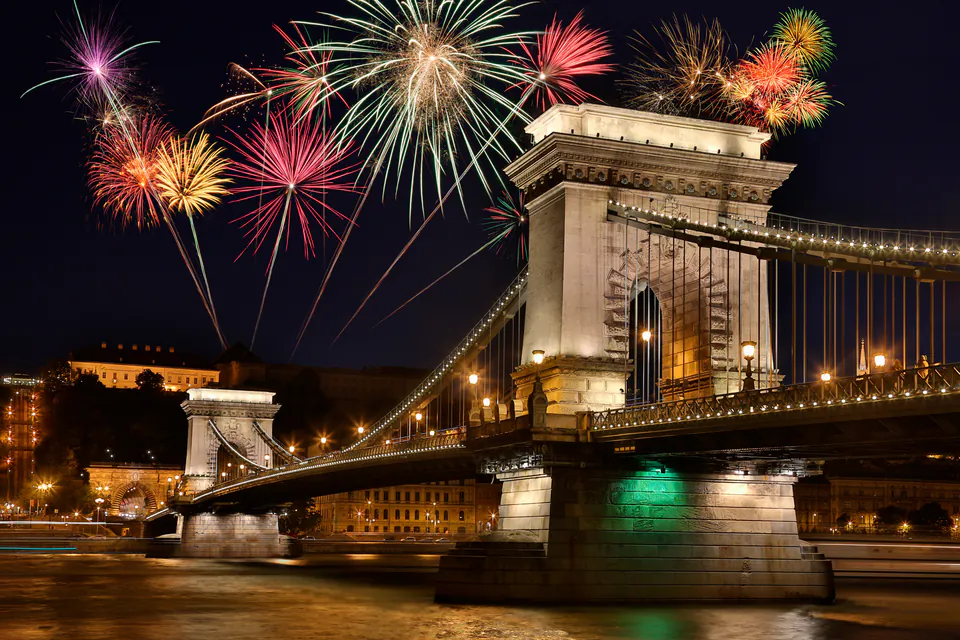When to Visit Budapest: A Seasonal Guide to Weather and Events
Budapest looks completely different depending on when you visit. We've been there during hot summer festivals and snowy winter nights, and honestly, each season has its own magic. The city changes so much throughout the year - from packed summer concerts along the Danube to quiet Christmas markets where you can actually enjoy the mulled wine without fighting crowds.
We always tell people that April-May and September-October are the sweet spots. The weather's great, prices are reasonable, and you won't be shoulder-to-shoulder with tour groups everywhere. But here's the thing - we've had amazing trips in every season, even during those freezing January days when the thermal baths feel like heaven.
Spring: When Everything Comes Alive
Spring in Budapest is pretty special. We watched the city wake up from winter during a March visit once, and by May the whole place was green and blooming. Temperatures go from about 10°C in March to a nice 22°C by May, which makes walking around much more enjoyable.
March can still surprise you with cold weather or even some snow, but April brings cherry blossoms and temps in the mid-teens. By May, you're looking at low 20s most days and longer daylight hours, though we learned to always carry an umbrella during our spring trips. The parks like Margaret Island and City Park turn into these amazing green spaces, and all the café terraces open up again after being closed all winter.
There's quite a bit happening in spring too. March 15th is Hungary's National Day with celebrations for the 1848 Revolution all over the city. We stumbled into one of these parades during our first Budapest trip and it was really cool to see. April has the Budapest Spring Festival with concerts and shows everywhere. Around Easter, you'll find nice markets and folk events, especially around Vajdahunyad Castle.
For budget travelers, spring is great because it's shoulder season. March and April often have good hotel and flight deals before summer prices kick in. The weather can be unpredictable though, so pack layers and a light rain jacket. We made the mistake of bringing only light clothes for an early March trip and spent our first day shopping for warmer gear!

Summer: Festival Time and Hot Days
Summer turns Budapest into this huge outdoor party. Temperatures hit 25-30°C regularly, and the days are super long which gives you tons of time for sightseeing. July and August can get really hot though - we're talking 35°C+ some days, so we always recommend doing the outdoor stuff early morning or evening.
June is already warm with mid-20s temperatures, and you get these afternoon thunderstorms that cool things down. July is the hottest month, usually 27-30°C with warm nights that are perfect for eating outside. Despite the heat, summer is when Budapest really comes alive with festivals and nightlife along the river. It does rain sometimes, but usually just quick storms that actually feel good when it's super hot.
The summer events calendar is packed. June has "Night of Museums" when everything stays open late. July brings Formula One and Budapest Pride with its big colorful parade. But August is when things get crazy with the week-long Sziget Festival on an island - it's massive and gets people from all over Europe. August 20th is St. Stephen's Day with incredible fireworks over the Danube and folk festivals throughout the city.
Summer is peak tourist season, so everything fills up fast and costs more. We've learned to visit major attractions really early or late in the day to avoid crowds. With the high temperatures, bring summer clothes, sunscreen, a hat, and definitely a water bottle you can refill. Take breaks indoors during the hot afternoons - perfect time for museums or jumping in one of the outdoor pools.

Autumn: Perfect Weather and Beautiful Colors
Autumn in Budapest might be our favorite season. You get this perfect balance between summer warmth and winter chill. September still feels like late summer with nice warm days around 24°C and cooler nights. When October comes around, the leaves start changing and temperatures drop to the mid-teens during the day - perfect walking weather with all those fall colors.
By November, it gets pretty chilly with highs around 7-10°C and nights near freezing. You'll see locals starting to bundle up as winter approaches. Autumn has moderate rainfall - September stays pretty dry, but October and November get more gray, wet days as daylight gets shorter. Early fall is super comfortable for walking around, and late fall has this quiet, atmospheric feel with the first holiday lights starting to appear.
The fall calendar has lots of food, wine, and cultural stuff. September has the Budapest Wine Festival at Buda Castle where you can taste Hungarian wines with amazing city views. There's also this dramatic horseback riding competition in Heroes' Square that celebrates Hungarian traditions. October has the Budapest Marathon and October 23 National Day remembering the 1956 Revolution. By mid-November, Budapest's famous Christmas markets start opening, especially at Vörösmarty Square.
Autumn is shoulder season so fewer tourists than summer and better hotel availability. You can often find lower rates on places to stay and flights, especially in late October and November. One thing to watch out for is September when convention season can fill hotels and drive prices up. If you're going mid-September, book your hotel early.

Winter: Christmas Magic and Thermal Bath Heaven
Winter shows you a totally different side of Budapest. The cold weather gets balanced out by holiday lights and those amazing steaming thermal baths. December is festive and pretty busy with daytime temps around 1-5°C and nights often below zero. Snow comes and goes - you might see some pretty snow on the rooftops or a snowfall that turns to slush pretty quickly. The Christmas markets and decorations make everything feel warm even when it's freezing outside.
January is the coldest month, averaging around -1°C and often dropping below -5°C at night. The Danube banks get frosty and fountains freeze over - it looks stark but really beautiful. February is similar but slightly warmer than January, starting to inch toward spring with some milder days mixed in. Both January and February are pretty dry but also the darkest months with short daylight hours. Despite the cold, the thermal baths are steaming and inviting, and cafés become these cozy refuges with hot drinks.
Winter's big highlight is definitely the Christmas markets from late November through December. Several markets around the city sell handmade crafts, winter snacks like chimney cake and mulled wine, and have nightly light shows. The city also has outdoor ice-skating at City Park Ice Rink under Vajdahunyad Castle. New Year's Eve in Budapest has fireworks over the Danube, parties, and fancy galas. In February, there's the Mangalica Festival celebrating Hungary's native woolly pig with sausages and pork dishes that liven up an otherwise quiet month.
Outside of Christmas and New Year, winter has the cheapest prices for visiting Budapest. January and February see the lowest airfare and hotel rates all year. If you don't mind cold weather, you can have top attractions almost to yourself and get great deals. Plan for indoor sightseeing on really cold days - Budapest's museums, galleries, and historic thermal baths are wonderful winter refuges. Soaking in a hot thermal pool while cold air swirls around is one of those classic Budapest winter experiences you can't get anywhere else.

Tourist Seasons: When Everyone Else Shows Up
Budapest has pretty clear tourist seasons that really affect your trip in terms of crowds, prices, and what the whole experience feels like.
Peak Season (June-August & December)
Summer from June through August is when Budapest gets packed with international travelers. People take advantage of school holidays and warm weather. The big summer draws are things like Sziget Festival and St. Stephen's Day celebrations. Hotels charge their highest rates and you need to book earlier. Popular attractions get long lines, so we always recommend getting advance tickets for must-see places like Parliament and the thermal baths.
December creates this second busy period centered around Christmas markets and New Year. The markets at Vörösmarty Square and St. Stephen's Basilica draw huge crowds looking for that festive atmosphere. The lit-up city creates this magical setting for evening walks across Chain Bridge and along the Danube.

Shoulder Season (April-May & September-October)
Late spring and early autumn give you the most balanced Budapest experience. During these months, temperatures usually stay between 15-25°C, which is comfortable for exploring without summer's occasional heat waves or winter's chill. The nice weather encourages outdoor activities while avoiding extreme conditions.
Way fewer visitors compared to summer, so shorter lines at major attractions and a more relaxed feel throughout the city. Hotel prices become much more reasonable, giving you better value without missing out on quality experiences. Restaurant terraces stay open (when weather allows), and the famous ruin bars operate with their cool mix of indoor and outdoor spaces.
These in-between seasons have several big events, including Budapest Spring Festival in April and Budapest Wine Festival in September. The moderate pace during these months lets you explore hidden courtyards and experience the city beyond the usual tourist stuff.
Off-Season (November-March, excluding December)
Budapest's off-season runs November through March, except for December's holiday period. During these months, especially January and February, the city has its lowest tourist numbers. Hotel prices hit their yearly lows, with big discounts available even at luxury places.
Winter weather brings average temperatures around or below freezing, especially in January and February. While cold conditions might limit some outdoor activities, they create the perfect setting for enjoying Budapest's famous thermal baths. Indoor attractions like museums, galleries, and the renowned café culture take center stage during these months.
March starts to see slightly more visitors as spring approaches, though still way fewer than during peak months. While less daylight and the possibility of snow or rain might put off some travelers, others love the atmospheric fog that sometimes covers the city, creating moody photos of landmarks.
Seasonal Comparison Guide
| Season | Months | Weather | Highlights | Crowds & Prices |
|---|---|---|---|---|
| Spring | March-May | Warming; ~10-22°C by May | Blooming parks, Spring Festival, Easter markets | Shoulder season: Moderate crowds, good deals (especially March) |
| Summer | June-August | Warm to hot; ~26-30°C | Long sunny days, Sziget Festival, St. Stephen's Day | Peak season: Largest crowds, highest prices |
| Autumn | September-November | Cooling; 24°C down to 8°C by November | Fall foliage, Wine Festival, early Christmas markets | Shoulder season: Fewer tourists, lower prices (except business travel in September) |
| Winter | December-February | Cold; ~0°C average, often below freezing | Christmas markets, New Year's Eve, thermal baths | Peak (December), Off-peak (Jan-Feb): Lowest prices of year (except holidays) |
What to Expect Each Month
If you're planning around specific dates, here's what Budapest is like throughout the year:
January-March: Cold to Getting Warmer
January is Budapest's coldest month with temperatures from about -4°C to 2°C. Snow and frost are pretty common, and you only get around 8 hours of daylight. Tourism hits rock bottom, making this a great month for budget travel with super low hotel rates and empty attractions.
February stays cold but gets slightly milder than January (around -1°C to 5-7°C). You still need a winter coat, though you might get a few more sunny days. Tourist numbers stay low, making it another budget-friendly month. Look out for the Mangalica Festival for some local culture.
March brings noticeable changes as spring starts. Average highs go up to 10-12°C, though early March can still feel wintery and nights stay chilly. Cherry blossoms and spring flowers start appearing by late March. Tourism picks up a bit, especially around the March 15 National Holiday.
April-June: Nice Weather Arrives
April is one of Budapest's best months. Spring is in full swing with daytime temperatures around 15-18°C. Parks are green and full of tulips. It's popular for city breaks, but still nowhere near peak tourist levels. Pack an umbrella though - April can be rainy.
May brings nice warm early summer vibes with days averaging 20-22°C. This month gets some of the highest rainfall of the year (often quick thunderstorms), so you'll see the city's trees really lush and green. It's a great time for outdoor stuff before the big summer rush.
June marks summer's arrival with temperatures regularly hitting the mid-20s°C and sometimes going higher. Daylight is long (sunset after 9 PM near the solstice). June can have a few rainy days or storms, but overall it's warm and sunny. This is when peak season starts - you'll notice more tour groups and busier attractions.

July-September: Hot Summer to Cooling Down
July is the hottest month with average highs around 27-28°C, often reaching 30°C or more in the afternoons. Nights are a comfortable 16°C. Rain is pretty light, but you get occasional heat-relief showers. Expect peak tourism with crowded streets and busy ruin pubs every night.
August is similar to July with hot days and warm nights. Heat waves can push temperatures well above 30°C in early August. The first half stays extremely busy with tourists and backpackers (especially around Sziget Festival). The month has Sziget Festival and national celebrations on August 20 (St. Stephen's Day) with fireworks.
September is a beautiful transition. Early September often still feels like summer, with days in the mid-20s°C. By late September, temperatures fall to the low 20s and teens, and the air gets crisper. Tourist numbers drop a lot compared to August, though Budapest hosts many conferences this month, so hotels can be busy.
October-December: Getting Cold Again
October is truly fall with temperatures in the mid-teens°C during the day and single digits at night. You'll want a jacket, especially after dark. The fall colors in places like Margaret Island and the Buda hills are gorgeous, and the weather is usually dry and crisp. Tourism is moderate, and the city is pretty calm.
November is the gateway to winter. Days are chilly and gray more often than not, with highs of 7-10°C and nights near freezing. You'll see the city getting ready for Christmas by mid-month, with lights going up and markets starting later in November. Tourist activity is low at the start of November, then slowly picks up as holiday markets appear.
December brings festive atmosphere and cold weather. Days average around 1-4°C, and it often feels colder with wind-chill. Snow can fall, though it might not stick for long. Budapest's Christmas markets run all month, filling the air with spiced wine and gingerbread smells. The first half isn't too crowded, but by late December the city fills with holiday travelers.

Festivals and Events All Year Long
Budapest has events going on throughout the year, from cultural festivals to food celebrations and national holidays.
Spring Events (March-May)
Spring starts with Hungary's National Day on March 15th, marking the 1848 Revolution with parades, speeches, and cultural programs. Locals wear the national colors of red, white, and green, creating this patriotic atmosphere at important historical sites.
April brings the internationally known Budapest Spring Festival with concerts, opera performances, theater productions, and art exhibitions. Venues across the city participate, from fancy places like the Hungarian State Opera to more intimate settings.
May amps up the festive mood with Budapest Beer Week, when about 60 Hungarian microbreweries partner with guest breweries to showcase their creations throughout the city. The month also sees the beginning of outdoor concert season and the opening of seasonal riverside bars along the Danube.
Summer Celebrations (June-August)
June has the Night of Museums, coinciding with the summer solstice, when cultural institutions open from early evening until dawn. The Danube Carnival also livens up the city with colorful folklore performances celebrating traditional dance, often staged against the backdrop of Budapest's iconic landmarks.
July brings Budapest Pride, a weeklong celebration ending with the colorful Pride Parade. The Formula 1 Hungarian Grand Prix, usually held in late July at the Hungaroring circuit outside the city, draws international racing fans and creates a buzzing atmosphere throughout Budapest.
August wraps up the summer season with St. Stephen's Day on August 20th, Hungary's most important national holiday. The day has impressive air shows over the Danube, a ceremonial raising of the Hungarian flag, and ends with a spectacular fireworks display. The Sziget Festival, one of Europe's largest music festivals, usually happens in early August on Óbuda Island.

Autumn Events (September-November)
As temperatures get more comfortable in September, the Budapest Wine Festival at Buda Castle lets visitors sample Hungarian wines from different regions, with a particular focus on the country's famous Tokaji varietals. Food pairings, live music, and craft demonstrations go along with the wine tastings.
October brings cooler weather and the CAFe Budapest Contemporary Arts Festival, showcasing modern music, dance, visual arts, and literature. The month also includes Republic Day on October 23rd, remembering the 1956 Hungarian Revolution against Soviet control.
November marks the transition toward winter with the gradual appearance of Budapest's famous Christmas markets. By mid-to-late November, the markets at Vörösmarty Square and in front of St. Stephen's Basilica start operating. The St. Martin's Day celebrations in early November also have special menus in restaurants across the city.
Winter Festivities (December-February)
December transforms Budapest with Christmas markets and holiday celebrations. The markets at Vörösmarty Square and St. Stephen's Basilica become magical evening destinations with light shows, live music, and vendors selling everything from handcrafted ornaments to traditional Hungarian foods.
New Year's Eve in Budapest has one of Europe's most spectacular celebrations, with massive street parties, fireworks over the Danube, and special events throughout the city. Chain Bridge and the riverbanks fill with people enjoying the midnight display that lights up Budapest's architectural treasures.
February brings Farsang, the Hungarian carnival season before Lent, with masquerades, special pastries, and celebrations that break the winter monotony. Throughout winter, the Budapest Opera and numerous concert venues present special programs, while the steaming thermal baths reach peak atmospheric appeal.